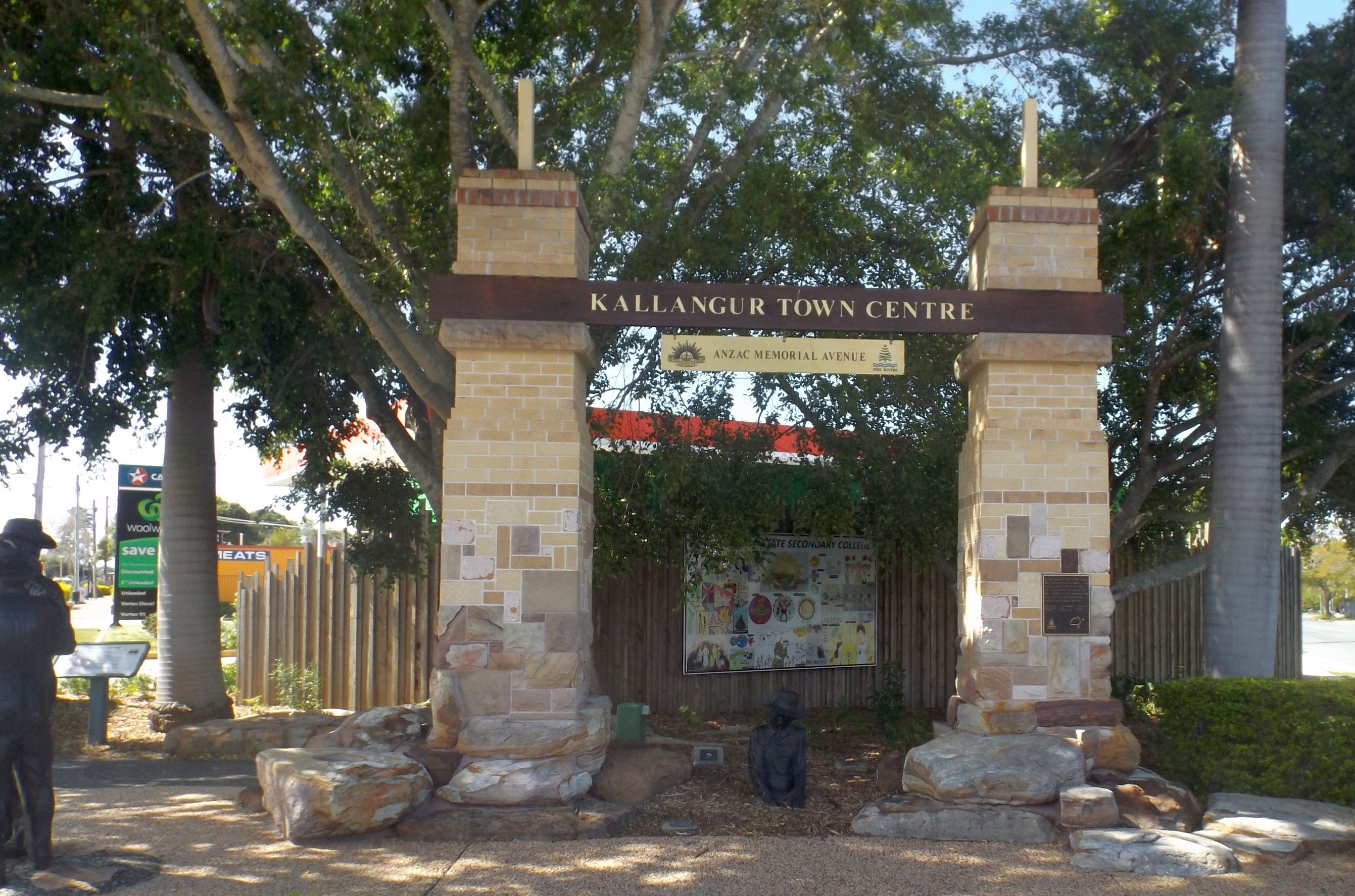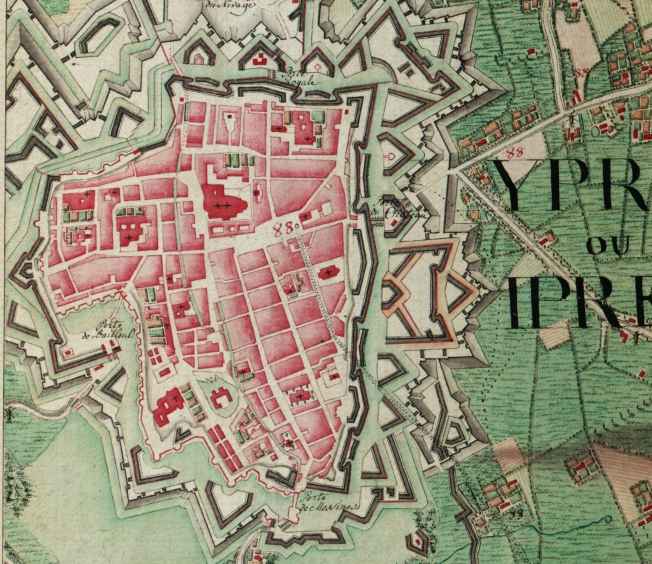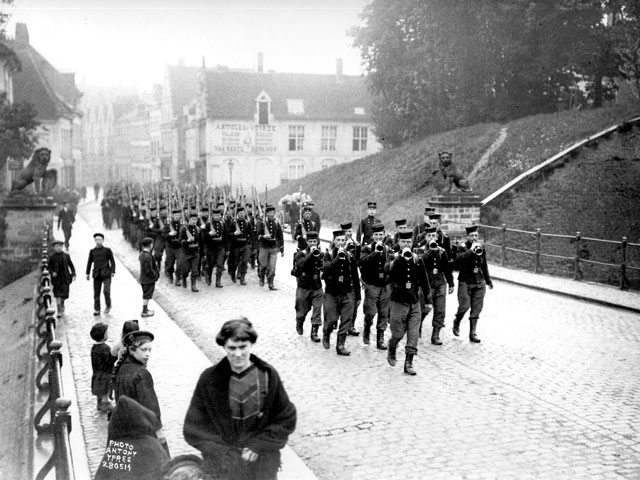|
Lt Thomas Armstrong Memorial
Lt Thomas Armstrong Memorial is a heritage-listed memorial at Victoria Street, Mirani, Queensland, Mirani, Mackay Region, Queensland, Australia. It was built in 1918. It was added to the Queensland Heritage Register on 21 October 1992. History This memorial is unusual in that it is dedicated to the memory of an individual soldier. It marks the death on 12 October 1917 of Lieutenant Thomas Acheson (Tom) Armstrong of the 33rd Battalion (Australia), 33rd Battalion who was killed in action at the age of 26 at the First Battle of Passchendaele at Zonnebeke near Battle of Passchendaele, Passchendaele, Flanders during the First World War. Prior to enlisting at the start of 1916, Armstrong was a medical student at the University of Sydney. Armstrong's family lived on a farm between Marian, Queensland, Marian and Mirani. The memorial was erected behind the altar at St James Presbyterian Church (later Uniting Church in Australia, Uniting Church) at Marian, a timber church located on An ... [...More Info...] [...Related Items...] OR: [Wikipedia] [Google] [Baidu] |
Mirani, Queensland
Mirani is a rural town and locality in the Mackay Region, Queensland, Australia. In the , the locality of Mirani had a population of 1,541 people. Geography The locality of Mirani is predominantly flat land used for sugar cane farming. It is bounded to the south by Lake Kinchant, the impoudment created by the Kinchant Dam. The Pioneer River passes through the locality from west to north and forms part of the northern boundary. The Mackay–Eungella Road passes from east to north-west through the locality. There are a network of private tramways through Mirani to transport the sugar cane to the Mackay Sugar mills. The town of Mirani is situated centrally within the locality on the eastern bank of the Pioneer River with Mackay-Eungella Road passing through it. History '' Yuwibara (''also known as ''Yuibera, Yuri, Juipera, Yuwiburra)'' is an Australian Aboriginal language spoken on Yuwibara country. It is closely related to the Biri languages/dialects. The Yuwibara languag ... [...More Info...] [...Related Items...] OR: [Wikipedia] [Google] [Baidu] |
Anzac Avenue
Anzac Avenue is a heritage-listed major arterial road lined with trees in the Moreton Bay Region, Queensland, Australia. It runs from Petrie to Redcliffe, with most of the route signed as state route 71. The route was formerly the main route to the Redcliffe peninsula, until the Hornibrook Bridge was opened in 1935. Opened in 1925, Anzac Memorial Avenue (as it was originally named) is the longest World War I memorial avenue in Queensland and was the first bitumen motor road connecting Brisbane to the popular holiday resort of Redcliffe, and reflects the growth in car usage in the early 1920s. It was added to the Queensland Heritage Register on 5 February 2009. The road provides the quickest access to the Peninsula Fair Shopping Centre, as well as being the main access road for the Redcliffe Hospital. Route description The current route begins in Petrie, at a roundabout intersection with state route 58 at Gympie Road and Dayboro Road. It proceeds north, then north-east, ... [...More Info...] [...Related Items...] OR: [Wikipedia] [Google] [Baidu] |
World War I Memorials In Queensland
War memorials were erected in many towns of Queensland, Australia, in commemoration of the service and death of many Queenslanders in World War I. History Queensland had few civic monuments before the First World War. The memorials erected in its wake became our most significant monuments, recording the devastating impact of the war on a young Queensland. Over 58,000 Queenslanders served in World War I and over 10,000 of them died. No previous or subsequent war has made such an impact on Queensland. Even before the end of the war, memorials became a spontaneous and highly visible expression of national grief. To those who erected them, they were as sacred as grave sites, substitute graves for the Australians whose bodies lay in battlefield cemeteries in Europe and the Middle East. British policy decreed that the Empire war dead were to be buried where they fell. The word "cenotaph", commonly applied to war memorials at the time, literally means "empty tomb". Australian war me ... [...More Info...] [...Related Items...] OR: [Wikipedia] [Google] [Baidu] |
National Archives Of Australia
The National Archives of Australia (NAA), formerly known as the Commonwealth Archives Office and Australian Archives, is an Australian Government agency that serves as the national archives of the nation. It collects, preserves and encourages access to important Commonwealth government records. Established under and governed by the ''Archives Act 1983'', its main roles are "to collect and preserve Australia's most valuable government records and encourage their use by the public, and to promote good information management by Commonwealth government agencies, especially in meeting the challenges of the digital age". The NAA also develops exhibitions, publishes books and guides to the collection, and delivers educational programs. History After World War I the Commonwealth National Library (later National Library of Australia) was responsible for collecting Australian Government records. The library appointed its first archives officer in 1944. In March 1961 the Commonwealth ... [...More Info...] [...Related Items...] OR: [Wikipedia] [Google] [Baidu] |
Latin
Latin (, or , ) is a classical language belonging to the Italic branch of the Indo-European languages. Latin was originally a dialect spoken in the lower Tiber area (then known as Latium) around present-day Rome, but through the power of the Roman Republic it became the dominant language in the Italian region and subsequently throughout the Roman Empire. Even after the fall of Western Rome, Latin remained the common language of international communication, science, scholarship and academia in Europe until well into the 18th century, when other regional vernaculars (including its own descendants, the Romance languages) supplanted it in common academic and political usage, and it eventually became a dead language in the modern linguistic definition. Latin is a highly inflected language, with three distinct genders (masculine, feminine, and neuter), six or seven noun cases (nominative, accusative, genitive, dative, ablative, and vocative), five declensions, four ... [...More Info...] [...Related Items...] OR: [Wikipedia] [Google] [Baidu] |
Lt Thomas Armstrong Memorial (2009)
Lt Thomas Armstrong Memorial is a heritage-listed memorial at Victoria Street, Mirani, Mackay Region, Queensland, Australia. It was built in 1918. It was added to the Queensland Heritage Register on 21 October 1992. History This memorial is unusual in that it is dedicated to the memory of an individual soldier. It marks the death on 12 October 1917 of Lieutenant Thomas Acheson (Tom) Armstrong of the 33rd Battalion who was killed in action at the age of 26 at the First Battle of Passchendaele at Zonnebeke near Passchendaele, Flanders during the First World War. Prior to enlisting at the start of 1916, Armstrong was a medical student at the University of Sydney. Armstrong's family lived on a farm between Marian and Mirani. The memorial was erected behind the altar at St James Presbyterian Church (later Uniting Church) at Marian, a timber church located on Anzac Avenue near the Marian sugar mill. The mason who created the memorial is unknown. It was mounted behind the pulpit ... [...More Info...] [...Related Items...] OR: [Wikipedia] [Google] [Baidu] |
Commonwealth Of Nations
The Commonwealth of Nations, simply referred to as the Commonwealth, is a political association of 56 member states, the vast majority of which are former territories of the British Empire. The chief institutions of the organisation are the Commonwealth Secretariat, which focuses on intergovernmental aspects, and the Commonwealth Foundation, which focuses on non-governmental relations amongst member states. Numerous organisations are associated with and operate within the Commonwealth. The Commonwealth dates back to the first half of the 20th century with the decolonisation of the British Empire through increased self-governance of its territories. It was originally created as the British Commonwealth of Nations through the Balfour Declaration at the 1926 Imperial Conference, and formalised by the United Kingdom through the Statute of Westminster in 1931. The current Commonwealth of Nations was formally constituted by the London Declaration in 1949, which modernised the ... [...More Info...] [...Related Items...] OR: [Wikipedia] [Google] [Baidu] |
Ypres
Ypres ( , ; nl, Ieper ; vls, Yper; german: Ypern ) is a Belgian city and municipality in the province of West Flanders. Though the Dutch name is the official one, the city's French name is most commonly used in English. The municipality comprises the city of Ypres/Ieper and the villages of Boezinge, Brielen, Dikkebus, Elverdinge, Hollebeke, Sint-Jan, Vlamertinge, Voormezele, Zillebeke, and Zuidschote. Together, they are home to about 34,900 inhabitants. During the First World War, Ypres (or "Wipers" as it was commonly known by the British troops) was the centre of the Battles of Ypres between German and Allied forces. History Origins before First World War Ypres is an ancient town, known to have been raided by the Romans in the first century BC. It is first mentioned by name in 1066 and is probably named after the river Ieperlee on the banks of which it was founded. During the Middle Ages, Ypres was a prosperous Flemish city with a population of 40,000 in 1 ... [...More Info...] [...Related Items...] OR: [Wikipedia] [Google] [Baidu] |
Menin Gate
The Menin Gate ( nl, Menenpoort), officially the Menin Gate Memorial to the Missing, is a war memorial in Ypres, Belgium, dedicated to the British and Commonwealth soldiers who were killed in the Ypres Salient of World War I and whose graves are unknown. The memorial is located at the eastern exit of the town and marks the starting point for one of the main roads out of the town that led Allied soldiers to the front line. “Menin” is the traditional name of the gate in this location of Ypres' city walls because it leads to the town of Menen. Designed by Sir Reginald Blomfield and built by the Imperial War Graves Commission (since renamed the Commonwealth War Graves Commission), the Menin Gate Memorial was unveiled on 24 July 1927. In early 2023, Menin Gate will close for extensive restoration works in time for the memorials centenary in 2027. Background In medieval times, the original narrow gateway on the eastern wall of Ypres was called the Hangoartpoort, "poort" being ... [...More Info...] [...Related Items...] OR: [Wikipedia] [Google] [Baidu] |
1906 – 1954)
Nineteen or 19 may refer to: * 19 (number), the natural number following 18 and preceding 20 * one of the years 19 BC, AD 19, 1919, 2019 Films * ''19'' (film), a 2001 Japanese film * ''Nineteen'' (film), a 1987 science fiction film Music * 19 (band), a Japanese pop music duo Albums * ''19'' (Adele album), 2008 * ''19'', a 2003 album by Alsou * ''19'', a 2006 album by Evan Yo * ''19'', a 2018 album by MHD * ''19'', one half of the double album ''63/19'' by Kool A.D. * ''Number Nineteen'', a 1971 album by American jazz pianist Mal Waldron * ''XIX'' (EP), a 2019 EP by 1the9 Songs * "19" (song), a 1985 song by British musician Paul Hardcastle. * "Nineteen", a song by Bad4Good from the 1992 album ''Refugee'' * "Nineteen", a song by Karma to Burn from the 2001 album ''Almost Heathen''. * "Nineteen" (song), a 2007 song by American singer Billy Ray Cyrus. * "Nineteen", a song by Tegan and Sara from the 2007 album '' The Con''. * "XIX" (song), a 2014 song by Slipknot. ... [...More Info...] [...Related Items...] OR: [Wikipedia] [Google] [Baidu] |
God Save The King
"God Save the King" is the national and/or royal anthem of the United Kingdom, most of the Commonwealth realms, their territories, and the British Crown Dependencies. The author of the tune is unknown and it may originate in plainchant, but an attribution to the composer John Bull is sometimes made. "God Save the King" is the ''de facto'' national anthem of the United Kingdom and one of two national anthems used by New Zealand since 1977, as well as for several of the UK's territories that have their own additional local anthem. It is also the royal anthem—played specifically in the presence of the monarch—of the aforementioned countries, in addition to Australia (since 1984), Canada (since 1980), Belize (since 1981), Antigua and Barbuda (since 1981), The Bahamas (since 1973), and most other Commonwealth realms. In countries not part of the British Empire, the tune of "God Save the King" has provided the basis for various patriotic songs, though still generally con ... [...More Info...] [...Related Items...] OR: [Wikipedia] [Google] [Baidu] |
Last Post
The "Last Post" is either an A or a B♭ bugle call, primarily within British infantry and Australian infantry regiments, or a D or an E♭ cavalry trumpet call in British cavalry and Royal Regiment of Artillery ( Royal Horse Artillery and Royal Artillery), and is used at Commonwealth military funerals, and ceremonies commemorating those who have died in war. Its duration varies typically from a little over one minute to nearly three minutes. For ceremonial use, the "Last Post" is often followed by " The Rouse", or less frequently the longer " Reveille". The two regimental traditions have separate music for the call. While the B♭ infantry bugle version is better known, the E♭ cavalry trumpet version is used by the state trumpeters of the Household Cavalry. Origin and wartime use The "First Post" call signals the start of the duty officer's inspection of a British Army camp's sentry posts, sounding a call at each one. First published in the 1790s, the "Last Post" c ... [...More Info...] [...Related Items...] OR: [Wikipedia] [Google] [Baidu] |








